If your company is like many others, you likely rely on dozens — if not hundreds — of applications to keep things running smoothly. These apps fuel productivity, facilitate collaboration, and support growth. From customer relationship management (CRM) and enterprise resource planning (ERP) systems to niche tools and cloud-based services, the average business’s technology stack is both vast and varied.
But without strong leadership and strategic oversight, your suite of business tools can quickly spiral out of control. The result is application sprawl — redundant tools, rising costs, inefficiency, and employee confusion. Left unmanaged, this sprawl not only stifles productivity but also weakens your overall IT strategy.
Recognizing the need for application consolidation is an important first step. But the more critical question is: Who is leading the charge?
The Cost of Unchecked Application Growth
When no single person or team is responsible for your application ecosystem, decisions about which tools to adopt often become reactive — driven by individual departments rather than overall business needs.
This scattered approach can create significant challenges, such as:
– Redundancy: Multiple departments using—and paying for—different tools that do the same job.
– Data silos: Important business data gets trapped in department-specific tools, making it harder to share, analyze, or act upon.
– Integration issues: Without seamless integration, manual workarounds emerge, increasing errors and inefficiencies.
– Wasted spending: Licenses go unused, and companies pay for overlapping software with underutilized features.
– Increased risk: The more fragmented your system, the more difficult it becomes to monitor security and manage access.
– Frustrated users: Employees waste time juggling too many tools or looking for the right one to complete their work.
Why Strong Leadership Drives Successful Application Consolidation
Reducing application overload isn’t just an exercise in cutting costs — it’s a crucial component of aligning your technology with your business strategy. Done right, consolidation boosts collaboration, strengthens security, and supports scalable growth. But achieving meaningful results requires coordinated leadership.
Having a single point of authority guiding consolidation offers several advantages:
– Strategic alignment: Ensures your applications support company-wide goals, not just departmental wish lists.
– Cost savings: Identifies and eliminates redundancies while negotiating better pricing.
– Workflow efficiency: Simplifies day-to-day operations by focusing on best-in-class tools with seamless integration.
– Clearer insights: Consolidation breaks down silos, enabling better reporting and data-driven decision-making.
– Better compliance and security: A smaller, more manageable app environment is easier to secure and audit.
– Accountability: With one leader overseeing the initiative, it’s easier to track outcomes, measure ROI, and maintain progress.
– Enhanced user experience: Employees have a clearer understanding of which tools to use and how, improving adoption and satisfaction.
Enter the Fractional CIO
So, who should lead this consolidation effort? Many internal IT managers focus on day-to-day operations, leaving limited bandwidth for long-term strategic planning. C-suite executives may lack the technical knowledge or the time to guide intricate IT decisions. And departmental leaders, while knowledgeable in their domains, usually take a siloed view.
This is where a fractional Chief Information Officer (CIO) becomes a game-changer.
A fractional CIO provides experienced, high-level IT leadership on a part-time or contract basis. They help small and mid-sized businesses streamline operations and make smarter technology decisions — without the high cost of a full-time executive.
Here’s what a fractional CIO can bring to your consolidation effort:
– Unbiased review of your current application environment
– Identification of redundancies, risks, and inefficiencies
– Strategic roadmap outlining consolidation priorities
– Alignment between IT investment and business outcomes
– Elimination of IT waste and underused technologies
– Change management expertise for seamless user adoption
– Improved vendor negotiations and contract evaluations
– Long-term planning for scalable, secure IT systems
Is Your Current IT Leader Ready for This Challenge?
Think carefully about who is currently leading your application strategy. Ask yourself:
– Do they fully understand both the technology and the business goals?
– Are they empowered to make tough decisions—even if it means retiring popular tools?
– Can they balance short-term usability with long-term efficiency?
– Do they have a company-wide perspective rather than a departmental one?
– Are they equipped with the time, tools and experience for large-scale consolidation?
If the answer to any of these questions is uncertain, it might be time to reconsider who’s steering your IT strategy. Without dedicated, strategic leadership, the benefits of application consolidation — savings, efficiencies, and improved performance — are hard to realize. A skilled fractional CIO brings the objectivity, experience and authority needed to make consolidation successful.
Move from Chaos to Clarity with Cytranet
Consolidating your business application stack is essential for simplifying workflows, enhancing security, and reducing unnecessary costs. But more importantly, it demands strategic leadership to drive measurable results. Cytranet helps organizations take control of their technology through expert-led consolidation, powered by fractional CIO services that combine deep technical knowledge with real business outcomes.
At Cytranet, our fractional CIOs guide


